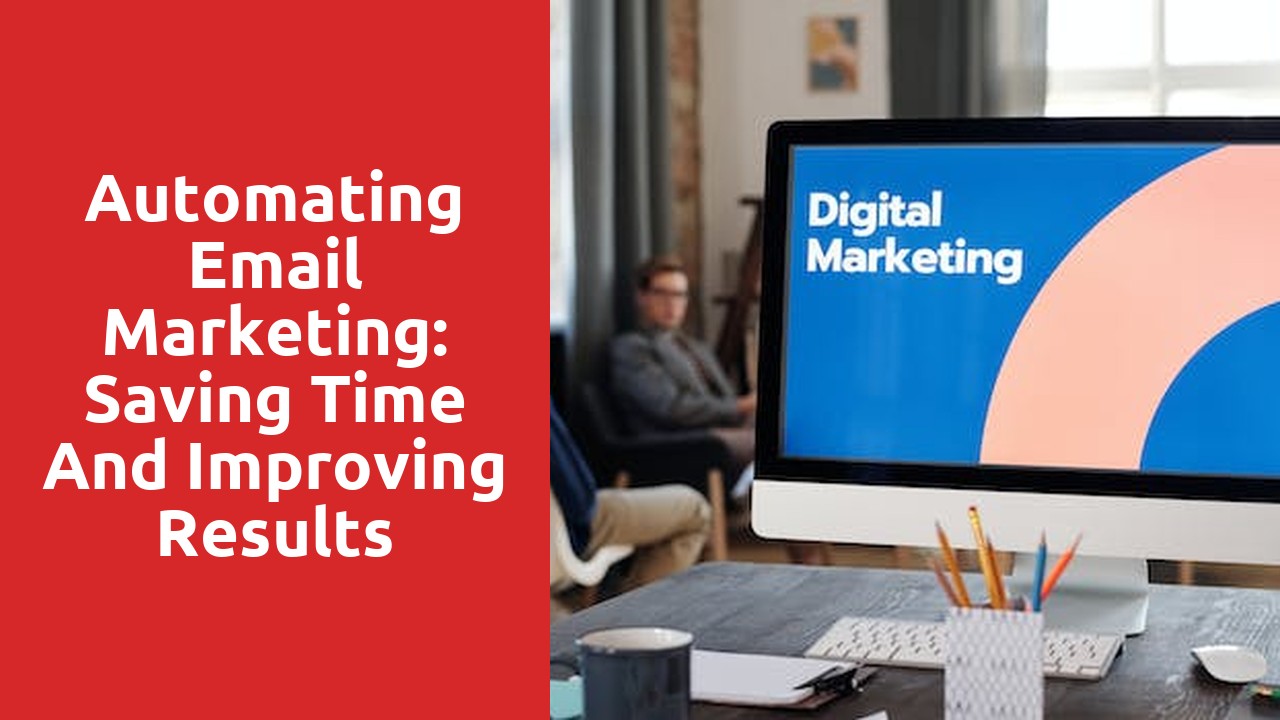Importance of understanding customer behavior in email marketing
Understanding customer behavior is crucial in the world of email marketing. It allows businesses to tailor their email campaigns to better meet the needs and preferences of their target audience. By analyzing customer data and tracking their purchasing patterns, businesses can gain valuable insights into what resonates with their customers and what doesn’t. This enables them to create personalized, relevant, and engaging email content that is more likely to convert leads into loyal customers.
Additionally, understanding customer behavior helps businesses in optimizing their email marketing strategy. By identifying which email campaigns perform the best and which ones fall flat, companies can refine their tactics and improve their overall performance. This data-driven approach ensures that businesses are investing their time and resources into strategies that are effective, rather than wasting efforts on campaigns that yield minimal results.
In conclusion, understanding customer behavior is not just a nice-to-have in email marketing; it is a must-have. It empowers businesses to create targeted email campaigns that resonate with their audience, leading to higher engagement, conversion rates, and ultimately, business growth. By harnessing the power of customer insights, companies can unlock the full potential of their email marketing efforts and build stronger relationships with their customers.
How to collect and analyze customer data for personalized email marketing
In order to effectively implement personalized email marketing strategies, it is crucial for businesses to collect and analyze customer data. This data serves as the foundation for understanding and reaching out to customers on an individual level, ultimately increasing customer engagement and driving conversion rates.
The first step in this process is to gather relevant customer information. This can be done through various methods, such as online surveys, website analytics, and social media monitoring. By asking customers to provide information such as their preferences, demographics, and purchase history, businesses can gain valuable insights into their target audience. It is important to ensure that the data collected is accurate and up-to-date, as this will enable businesses to deliver personalized content that resonates with each customer.
Benefits of data-driven personalization in email marketing campaigns
By leveraging data-driven personalization in email marketing campaigns, businesses can achieve significant benefits. One of the main advantages is increased customer engagement. When emails are tailored to individual preferences and behaviors, recipients are more likely to open them, click on links, and take the desired actions. This can lead to higher conversion rates and improved return on investment for the marketing efforts.
Another benefit of data-driven personalization is enhanced customer satisfaction. When recipients receive emails that are relevant and personalized to their needs and interests, they feel valued and understood. This fosters a positive relationship between the business and the customer, which can result in higher customer loyalty and repeat purchases. Moreover, personalized emails can also help businesses stay top-of-mind for their customers, as they are more likely to remember and engage with emails that speak directly to their needs and preferences.
Strategies for segmenting your email list based on customer insights
Segmenting your email list based on customer insights can greatly improve the effectiveness of your email marketing campaigns. By dividing your subscribers into distinct groups, you can target your messaging and offers to better suit their needs and preferences. One strategy for segmenting your email list is to analyze customers’ past purchasing behavior. By tracking what products or services they have bought in the past, you can create segments based on specific interests or buying patterns. This allows you to send highly targeted emails that are more likely to resonate with individual customers, increasing the chances of conversions and sales.
Another approach to segmenting your email list is to consider demographic information such as age, gender, location, or income level. By understanding the characteristics of your customers, you can tailor your emails to better align with their unique needs and circumstances. For example, if you are offering a promotion for a product that is particularly popular among millennials, you can create a segment specifically targeting that age group. This way, you can craft emails with language, imagery, and offers that will appeal specifically to them, increasing the likelihood of engagement and conversion. Segmenting your email list based on customer insights allows you to deliver more personalized and relevant content, ultimately leading to improved email campaign performance.
Tools and technologies for implementing data-driven personalization in email marketing
Tools and technologies play a crucial role in implementing data-driven personalization in email marketing campaigns. Businesses are increasingly realizing the importance of delivering tailored, relevant content to their customers to drive engagement and conversions.
One such tool that has gained significant popularity is email automation software. These platforms allow marketers to streamline their email marketing efforts by automating repetitive tasks, such as sending personalized welcome emails, abandoned cart reminders, and post-purchase follow-ups. By leveraging customer data captured through their website or CRM system, marketers can segment their audience and send targeted messages based on customer preferences, behavior, and buying history. This not only saves time but also ensures that the right message reaches the right person at the right time, leading to higher open rates and click-through rates.
Another technology that is revolutionizing email personalization is predictive analytics. By employing machine learning algorithms, marketers can analyze vast amounts of data to identify patterns and trends, enabling them to predict customer behavior and preferences. This allows them to create hyper-personalized email campaigns that are tailored to each individual’s interests, increasing the likelihood of engagement and conversions. Predictive analytics can also help marketers identify high-value customers and segment them accordingly, enabling them to create exclusive offers or rewards that further enhance customer loyalty.
In conclusion, the use of tools and technologies for implementing data-driven personalization in email marketing has become essential to stay competitive in today’s digital landscape. Email automation software and predictive analytics are just two examples of the many innovative solutions available to marketers. By leveraging these tools, businesses can create highly targeted, relevant, and personalized email campaigns that not only delight their customers but also drive measurable results.
Best practices for creating personalized email content based on customer insights
One of the best practices for creating personalized email content based on customer insights is to segment your audience. By dividing your email list into smaller groups based on characteristics such as demographics, behaviors, or interests, you can deliver more targeted and relevant content to each segment. This allows you to address specific pain points, preferences, or needs, thereby increasing the chances of engagement and conversions. For example, if you have an online clothing store, segmenting your audience based on gender or past purchase history can help you send tailored recommendations or exclusive promotions that resonate with each group.
Another essential practice is to leverage customer data to personalize the email content. By collecting and analyzing data such as past purchases, browsing history, or email interactions, you can gain valuable insights into each customer’s preferences and behaviors. This data can be used to create highly personalized email campaigns that speak directly to individual customers. For instance, if a customer has previously purchased running shoes, sending them an email with new releases on running gear or tips for improving their running performance can be highly effective. By utilizing customer insights in this way, you can enhance the relevance and value of your email content, leading to higher engagement and better results.














